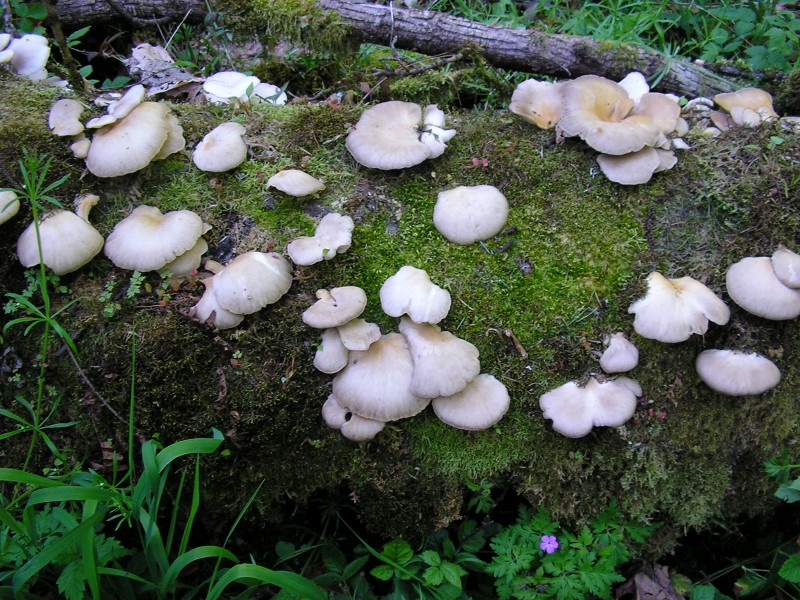Pleurotus pulmonarius (maybe).
Posted by Astrid 5/7/12 ----- Scroll Down to See the Discussion


Astrid: I took these photo's today and I'm trying to get a spore print now.
The spore color is brownish.
My first thought was oyster mushroom, Pleurotus pulmonarius.
Grows in the PNW in spring, grows on wood (conifer and hardwood) gills
whitish and decurrent off center.
Paul W. Sure looks like a Pleurotus to me
but the spore color is confusing.
I assume
the caps are a few inches in diameter?
I'd sure like to know what this is.
Astrid: It was very light brownish color.
I had to use a magnifying glass.
The
small piece I took home was 1 1/2 in and the larger 3 1/2 in.
Dick B: Most likely Pleurotus
then but I have to tell you they get wormy very fast
in this warm weather. It's very unlikely they will last until the next
meeting.
Some Pleurotus spores are described as buff.
Buff is described as a brownish
yellow to a pale yellowish or grayish brown.
If with a thick spore deposit
the spores are buff
as defined above then your mushrooms may be Pleurotus.
But if they are darker than a pale brown you may want to look elsewhere
(crepidotus perhaps).
Paul W: I thought Crepidotus
but they are supposed to be smaller than what Astrid
measured.
Besides Crepidotus grows on twigs not large logs as shown...
BTW: all of the oysters I have collected this year
have very white spore
prints.
Dick B: I have not seen any spore prints of Pluerotrus than are pure white.
I rarely
collect Pluerotus so the ones I see have been brought to me.
The ones I have
seen usually have a violet cast but I have seen some that are pale brown.
You may not notice the pale color unless you have a fairly thick spore
print.
If you find some more Pleurotus with a pure white spore print
I would
be interested in seeing the mushrooms and spore print.
Sava: I'm not sure either, just by looking at Paul's spore print photo,
that its color is really white.
And, of course, in every color sequence like white-whitish-pinkish-pink,
every transition is subjective.
(Note that these colors are often mentioned in mushroom descriptions.)
The ambient light and the camera's understanding of it ("white balance")
further aggravate the problem.
The best we can do without much effort could be the following:
(1) Take the spore print on a glass slide (or some other clear glass);
(2) Place a white balance card next to the slide and take a picture under (any) uniform light.
A good white balance card is WhiBal
(http://www.amazon.com/GENUINE-WhiBal-Certified-Neutral-Balance/dp/B004G3NW5M/ref=sr_1_1?ie=UTF8&qid=1336623414&sr=8-1).



